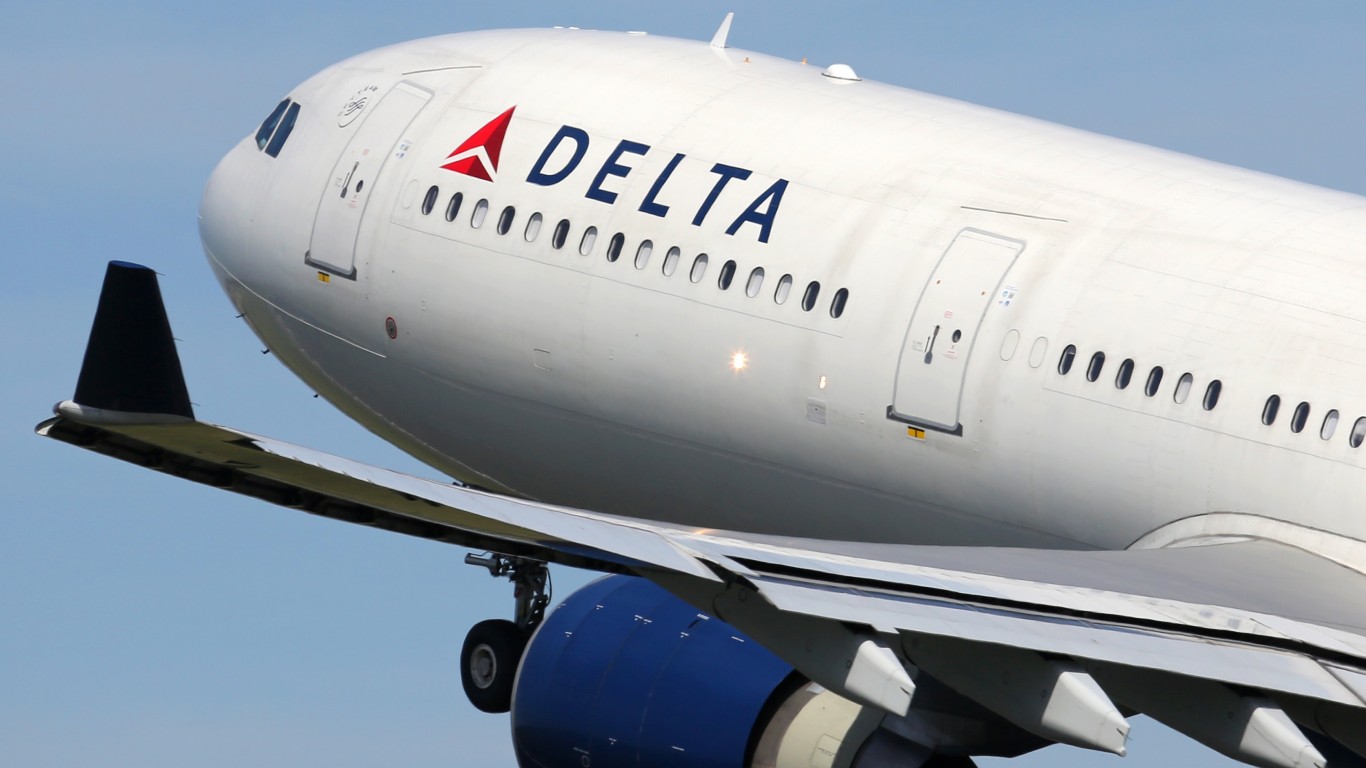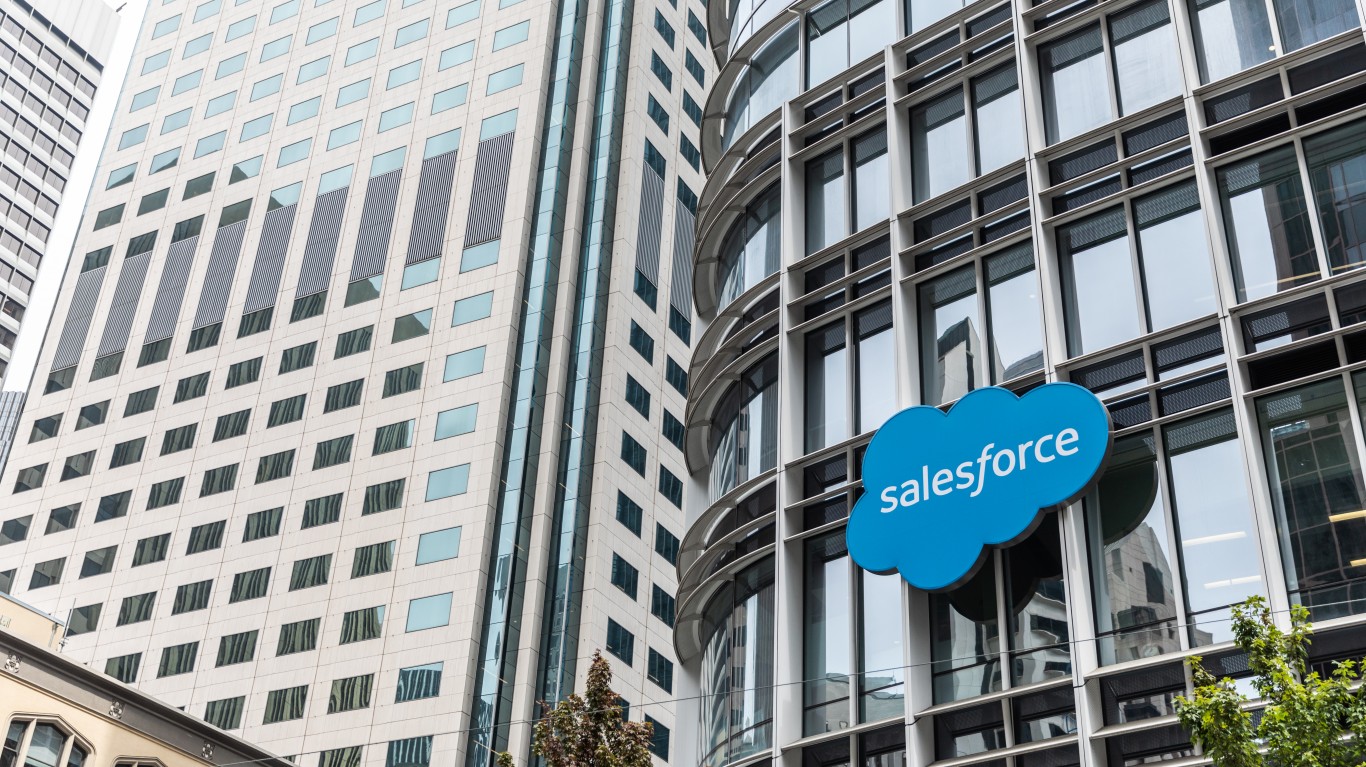
The first big week of the new earnings season continues with several big companies reporting earnings before Thursday’s opening bell.
The first three of the country’s largest banks reported quarterly results Wednesday morning, and two more, plus the world’s largest asset manager, report on Thursday. A major airline, a Dow 30 component, a specialty retailer and more are scheduled to report Thursday morning.
[in-text-ad]
Delta Air Lines
Last year was dismal for U.S. air carriers. Delta Air Lines Co. (NYSE: DAL) saw its shares fall by nearly 31% in 2021, though its losses were the smallest of any legacy carrier. That’s the context for the company’s one-year share price gain of nearly 95% and the year-to-date gain of about 41% — been down so low, everything looks like up. While air traffic is up by a factor of 10 year over year, it remains roughly half the size of 2019 traffic. Industry analysts expect Delta to continue posting daily cash burns of $12 million to $14 million for at least another quarter.
Of 18 analyst ratings, all are Buy or Strong Buy. The consensus price target on Delta stock is $52.76, implying a potential upside of around 11%, based on a recent price of around $47.50 per share. At the high target of $72, the implied upside is nearly 52%.
Analysts expect Delta to post a first-quarter loss per share of $2.91 on revenue of $3.98 billion. In the first quarter of last year, Delta posted a net loss per share of $0.51 on $8.59 billion in revenue.
The stock trades at a multiple of 12.6 times estimated 2022 EPS and 7.8 times estimated 2023 earnings. The stock’s 52-week range is $17.51 to $52.28. Delta has suspended its dividend.
United Healthcare
UnitedHealth Group Inc. (NYSE: UNH) is the nation’s largest health insurer and one of 30 stocks included in the Dow Jones industrial average. The stock has gained about 45% in the past 12 months, even though growth since the beginning of the year has been a rather modest 8%. The interesting thing about United Healthcare is that revenue has risen steadily over the past half-dozen years, and so has net income. The stock may be fully valued at its current price, but that doesn’t mean growth has evaporated.
Of 22 analyst ratings, all are Buy or Strong Buy. The consensus price target on United Healthcare stock is $403.83, implying a potential upside of around 7.2%, based on a recent price of around $376.60 per share. At the high target of $462, the implied upside is more than 14%.
Analysts expect the company to post first-quarter earnings per share (EPS) of $4.36 on revenue of $69.27 billion. In the first quarter of last year, United Healthcare posted $3.72 in EPS and revenue of $64.42 billion.
The stock trades at a multiple of 20.7 times expected 2021 EPS, 17.8 times estimated 2022 EPS and 15.7 times estimated 2023 earnings. The stock’s 52-week range is $267.00 to $380.50, and the company pays an annual dividend of $5.00 (yield of 1.33%).
Pepsi
Despite an up and down year in 2020, PepsiCo Inc. (NYSE: PEP) but managed to post a share price gain of nearly 12% for the whole year, including a 23% price drop in late March. For the past 12 months, shares are up about 10.4%, and since January the stock has dipped by about 2.7%. Pepsi fared better than archrival Coca-Cola in 2020 because Pepsi relies less on restaurant and out-of-home sales. Yet, rising commodity and transportation costs may continue to weigh on profits.
[in-text-ad]
Of 22 analysts’ ratings on the shares, 12 are Buy or Strong Buy and the rest are Hold. At a current price of around $143.30, the potential upside to the consensus price target of $152.04 is about 6%. At the high target of $162, the potential upside is about 12.4%.
Analysts expect Pepsi to post EPS of $1.12 on sales of $14.55 billion for the first quarter. Last year, first-quarter EPS were $1.07, on sales of $13.88 billion.
PepsiCo stock trades at a multiple of 23.7 times expected 2021 EPS, 21.9 times estimated 2022 EPS and 20.3 times estimated 2023 earnings. The stock’s 52-week range is $126.53 to $148.77, and the company pays an annual dividend of $4.09 (yield of 2.86%).
Rite Aid
Drugstore giant Rite Aid Corp. (NYSE: RAD) posted a gain of just 2.3% in 2020, but looking back at the previous 12 months, the stock has done much better, rising about 46%. The stock had added about 77% in the first three weeks of the year, but that meteoric rise has settled into a gain for the year to date of just over 20%. The latest whack to the share price came late last month when Rite Aid lowered its sales guidance for its fourth fiscal quarter and said it expects a net loss of $100 million for the 2021 fiscal year.
The company doesn’t get a lot of love from analysts, with just one of eight ratings on the stock a Buy and the rest rating it a Hold. Shares currently trade near the consensus price target of $19.13. At the high target of $27, the potential upside on the stock is 42%.
Analysts expect Rite Aid to post a fourth-quarter loss per share of $0.55 on sales of $5.8 billion. For the 2021 fiscal year, Rite Aid is expected to report EPS of $0.09 and sales of $23.98 billion.
Rite Aid stock trades at a multiple of around 210 times expected 2021 EPS, 18.5 times estimated 2022 EPS and 62.7 times estimated 2023 earnings. The stock’s 52-week range is $8.86 to $32.487, and the company does not pay a dividend.
Are You Ahead, or Behind on Retirement? (sponsor)
If you’re one of the over 4 Million Americans set to retire this year, you may want to pay attention.
Finding a financial advisor who puts your interest first can be the difference between a rich retirement and barely getting by, and today it’s easier than ever. SmartAsset’s free tool matches you with up to three fiduciary financial advisors that serve your area in minutes. Each advisor has been carefully vetted, and must act in your best interests. Start your search now.
Don’t waste another minute; get started right here and help your retirement dreams become a retirement reality.
Thank you for reading! Have some feedback for us?
Contact the 24/7 Wall St. editorial team.

 24/7 Wall St.
24/7 Wall St.



